Blog Archives
Post navigation

NHS South, Central and West
ArcGIS has enabled us to build a complete, end-to-end process for allocating funding objectively to eligible community pharmacies.
Working on behalf of a wide range of NHS stakeholders, NHS South, Central and West has developed an end-to-end solution to support the equitable allocation of funding to community pharmacies throughout England. Built using ArcGIS, the solution is helping the Department of Health and Social Care to reduce health inequalities and ensure 89% of the population lives within a 20-minute walk of a pharmacy.
ArcGIS Pro is used to determine eligibility for funding based on walking distances between pharmacies
ArcGIS Hub enables the entire decision-making process to be transparent to all stakeholders and pharmacies
An online form, built with ArcGIS Survey123, integrates with an ArcGIS Dashboard to facilitate an effective review process
The Challenge
There are over 11,600 community pharmacies in England, and around 1.6 million people visit a pharmacy every day for healthcare advice, medications, and healthcare services like vaccinations*. The Department of Health and Social Care aims to ensure that everyone throughout England has access to a pharmacy near where they live, work or shop. To support this aim, it provides financial support for pharmacies in more remote locations that may be less viable as businesses but that are nonetheless incredibly valuable to the communities they serve.
The Department of Health and Social Care wanted to know the distance between each pharmacy and the closest five other pharmacies, so that it could use this information as part of its funding criteria. It approached NHS South, Central and West (SCW) and asked it to analyse data to help determine which pharmacies would be eligible for support through the Pharmacy Access Scheme (known as PhAS). Whilst the department’s initial request was for a spreadsheet showing the results of this analysis, SCW proposed a more innovative approach that far exceeded the department’s expectations.
* PSNC 2022
“What Esri UK has enabled us to do is bring together a huge range of technical solutions in one easy-to-use final product.”
Clare Scarborough, Principal Geospatial Analyst, NHS South Central and West
The Solution
SCW’s big idea was to develop an end-to-end solution to support the entire PhAS process using Esri’s ArcGIS suite of products. It worked closely with a large number of stakeholders to deliver this solution, including the Department of Health and Social Care, 13 regional teams at NHS England, as well as the Pharmaceutical Services Negotiating Committee, representing community pharmacies.
Initially, SCW was able to geocode the locations of all 11,600 pharmacies in England and created an accurate pharmacy dataset using Esri’s ArcGIS Pro. It then used the network analysis capabilities of ArcGIS Pro together with Ordnance Survey’s highways network data to calculate walking distances from each pharmacy to the five closest pharmacies.
SCW next built an interactive web portal, using ArcGIS Hub, to enable all stakeholders, including the individual pharmacy owners, to see the results of the analysis. With NHS branding and links to supplementary information about PhAS, the ArcGIS Hub site includes an embedded ArcGIS Online web app enabling users to zoom into any pharmacy and see the walking route calculated to other nearby pharmacies.
Recognising that some pharmacies may want the decisions made to be reviewed, SCW subsequently built an online form using ArcGIS Survey123 that is easily accessible from the ArcGIS Hub site. Now, if pharmacies spot a problem, such as a walking route that has been plotted via unsafe steps or unlit pathways, they can use this online form to upload information and evidence.
Finally, SCW built an Esri Dashboard using ArcGIS Enterprise, called the Reviewer Dashboard, which enables regional teams within NHS England to review details relating to decisions made. This dashboard draws in information from the ArcGIS Survey123 forms and provides easy access to all the information that reviewers need to make a balanced judgement. “What Esri UK has enabled us to do is bring together a huge range of technical solutions in one easy-to-use final product,” says Clare Scarborough, Principal Geospatial Analyst at SCW.
“The Pharmaceutical Services Negotiating Committee signed the project off as the best they had seen so far in terms of PhAS work.”
Cliff Mwando, Geospatial Technical Manager, NHS South Central and West
Benefits
A complete, end-to-end process to support the PhAS funding scheme
SCW’s solution is a single, end-to-end process for allocating funding to community pharmacies through PhAS providing a far greater level of information than a simple spreadsheet of distances. Developed in collaboration with all key stakeholders, the solution met the desired requirements – from identifying eligible pharmacies to handling reviews. Justly proud of his team’s achievements, Cliff Mwando, Geospatial Technical Manager at SCW, commented, “The Pharmaceutical Services Negotiating Committee signed the project off as the best they had seen so far in terms of PhAS work.”
Targeted allocation of funding to relieve health inequalities
The use of ArcGIS Pro for analysis ensured that all funding decisions were objective, based on evidence and a consistently-applied policy. As a result, the Department of Health and Social Care could be confident that its budget was being targeted at the right pharmacies to maintain equitable access to pharmacists and reduce health inequalities. The department could better understand walking distances between pharmacies, helping it to ensure that 89% of the population has access to a community pharmacy within a 20-minute walking distance.
Greater transparency about how decisions were made
ArcGIS Hub significantly improved the transparency of PhAS, by enabling all stakeholders and each individual pharmacy owner to see the walking routes calculated. The Reviewer Dashboard also provided an accurate record of which pharmacies asked for reviews, what decisions were made and why. Both solutions enable users to view and interrogate the data, helping them to better understand the decision making process.
A more structured and efficient review process
By incorporating the review process into the end-to-end solution, SCW has provided stakeholders with an effective way to engage with pharmacies and respond to queries on a case-by-case basis. “The SCW team has enabled us to deliver a robust and transparent review process for community pharmacy contractors; and the portal has delivered a streamlined and largely automated process,” says Stephen Riley, Senior Policy Lead at NHS England. “Overall, this led to an efficient process and contributed to consistent decision making, supporting appropriate access to the Pharmacy Access Scheme.”
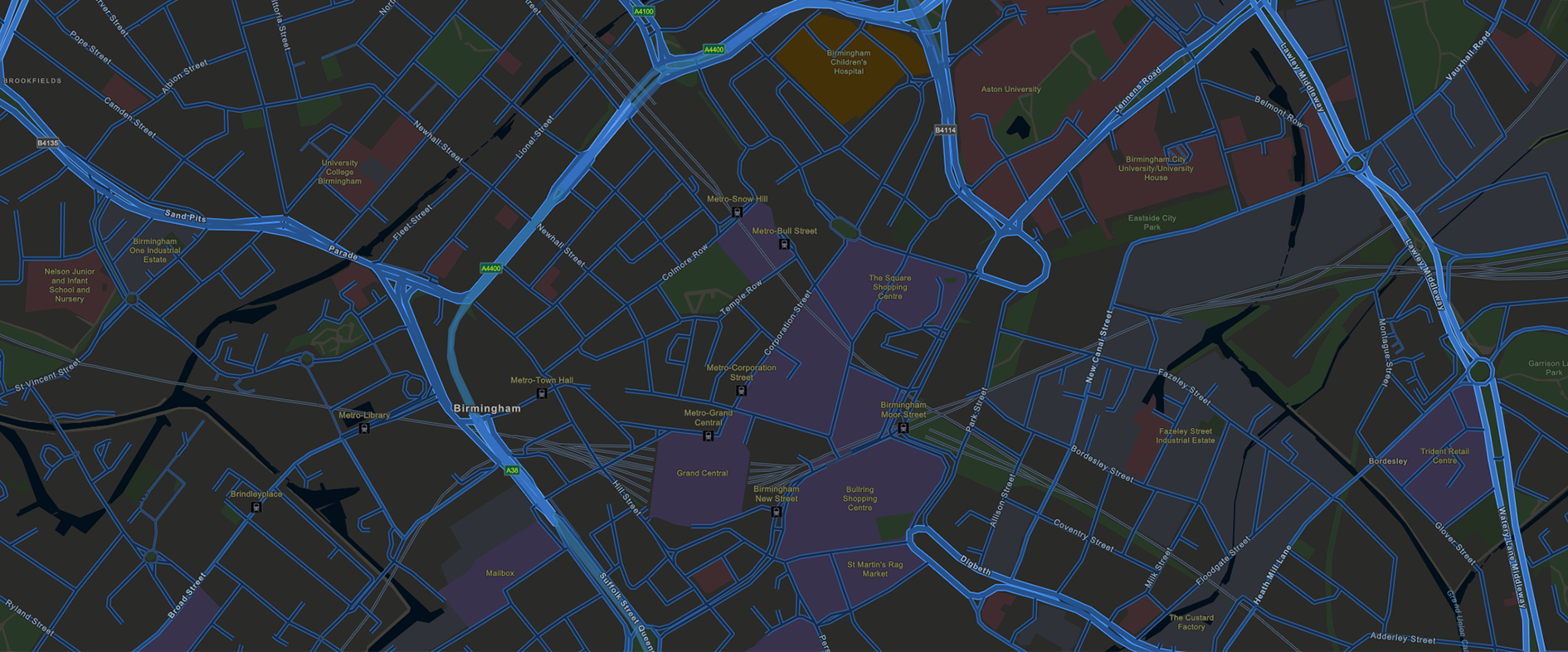
Carter Jonas
We now have a highly efficient, standardised digital process for conducting property inspections nationwide that is saving us time and improving our service for clients.
The multi-disciplinary property consultancy Carter Jonas has completely transformed its property inspection process using Esri’s ArcGIS system. The new end-to-end solution removes 25,000 hours of manual administrative work every year and enables the business to provide a more efficient and sustainable service for clients.
Property inspections nationwide are completed in a consistent way on smartphones using ArcGIS Survey123 forms
Asset managers view inspection results and property management information via a mapping app created with ArcGIS Maps SDK for JavaScript
Accurate, up-to-date information about all properties in large property portfolios can be viewed and analysed in ArcGIS Dashboards
The Challenge
Carter Jonas manages large portfolios of commercial, residential and rural property on behalf of its clients, many of which have hundreds of individual properties all around the country. As part of these property management contracts, the organisation carries out more than 5,000 property inspections per year, including condition and hazard inspections for tenanted homes.
Historically, all these inspections were completed using paper-based forms. It then took asset managers up to six hours to type up the survey data when they got back to the office and attach pictures to their reports. This manual process was not only time-consuming, but also resulted in inconsistent approaches across different teams in the UK and, as data wasn’t centralised, it could not be easily analysed to identify common issues across large property portfolios.
“The time savings that we are achieving are freeing us up to spend more time interacting with tenants and delivering an improved level of service for our clients.”
Simon Nigh, Head of Geospatial Services, Carter Jonas
The Solution
Carter Jonas had recently migrated to the ArcGIS Enterprise system, hosted on Azure in UK-based datacentres, after using ArcGIS desktop applications for several years. When a new team was established at Carter Jonas with the specific remit to advance the use of digital property management solutions within the business, a plan emerged to harness the capabilities of ArcGIS to build a new, fully integrated, end-to-end digital solution for property inspections.
Now in use across Carter Jonas’ 34 offices nationwide, the new solution has replaced paper-based forms with a series of digital surveys, built with ArcGIS Survey123 and ArcGIS Field Maps. Asset managers capture inspection information on their smartphones while at client properties and attach pictures. All the inspection data is uploaded directly to a centralised ArcGIS database, where it is combined with data from the company’s property management system, as well as contextual geospatial data from the Esri Living Atlas of the World and Esri UK Premium Data Services.
When back at their desks, asset managers then use a web app known as Survey Manager to view and edit the inspection data. Built using the ArcGIS Maps SDK for JavaScript, Survey Manager allows asset managers to explore large property portfolios on a mapping interface, click on individual properties to view inspection data in a familiar template format and simply tap a button to export pdf reports.
As an extension to this core process, Carter Jonas has also built a number of ArcGIS Dashboards and web apps that give asset managers a high level oversight of the progress of inspections and any issues highlighted across large property portfolios. The integration of property management and inspection data enables asset managers to analyse inspection findings, monitor rent arrears and access documentation, such as gas safety certificates, all from one screen. In the future, the organisation plans to further integrate its inspection data with data from indoor positioning systems, drones and remote sensors, creating digital twins that will help it manage properties throughout their lifetime.
“We now have a very secure way of collecting and handling inspection data and have confidence that the data in our system is absolutely up-to-date.”
Simon Nigh, Head of Geospatial Services, Carter Jonas
Benefits
25,000 hours saved annually
Using the new digital inspection process developed with ArcGIS Enterprise, Carter Jonas can now produce inspection reports in 45 minutes, rather than 4-6 hours. It is consequently saving around 5 hours per report, which equates to 25,000 hours of staff time per year or 12 full-time positions, based on the average figure of 5,000 annual inspections. “The time savings that we are achieving are freeing us up to spend more time interacting with tenants and delivering an improved level of service for our clients,” says Simon Nigh, Head of Geospatial Services at Carter Jonas.
More cost-efficient property maintenance
Using the Survey Manager portal and ArcGIS Dashboards, asset managers can now easily identify similar issues across multiple properties and help their clients to reduce maintenance costs. For example, asset managers would be able to see if twenty properties nationwide have faults with doors, enabling the client to order twenty new doors and take advantage of bulk purchase discounts. “Because all our inspection data is stored in one place, in the same format, for the first time, we can query it more easily,” Nigh explains. “Our new ArcGIS inspection process gives us a better understanding of issues across large property portfolios, enabling us to provide more valuable information to our clients.”
Reduced carbon emissions due to standardised process
As all inspections, for all clients, across all regions of the UK, are now conducted using the same, consistent digital process, asset managers can inspect any property, not just the properties within a specific portfolio. Carter Jonas is, therefore, beginning to allocate inspection jobs to the asset managers that live closest, significantly reducing journey times, cutting carbon emissions and supporting the company’s desire to operate more sustainably.
Improved data security and data currency
Carter Jonas no longer holds client data relating to inspections on a plethora of paper forms, which reduces data security risks. Furthermore, its new end-to-end ArcGIS process also ensures that up-to-the-minute inspection data is captured centrally in near real-time, without the delays associated with typing in information manually. “Data security and data currency are key considerations for clients,” Nigh says. “We now have a very secure way of collecting and handling inspection data and have confidence that the data in our system is absolutely up-to-date.”
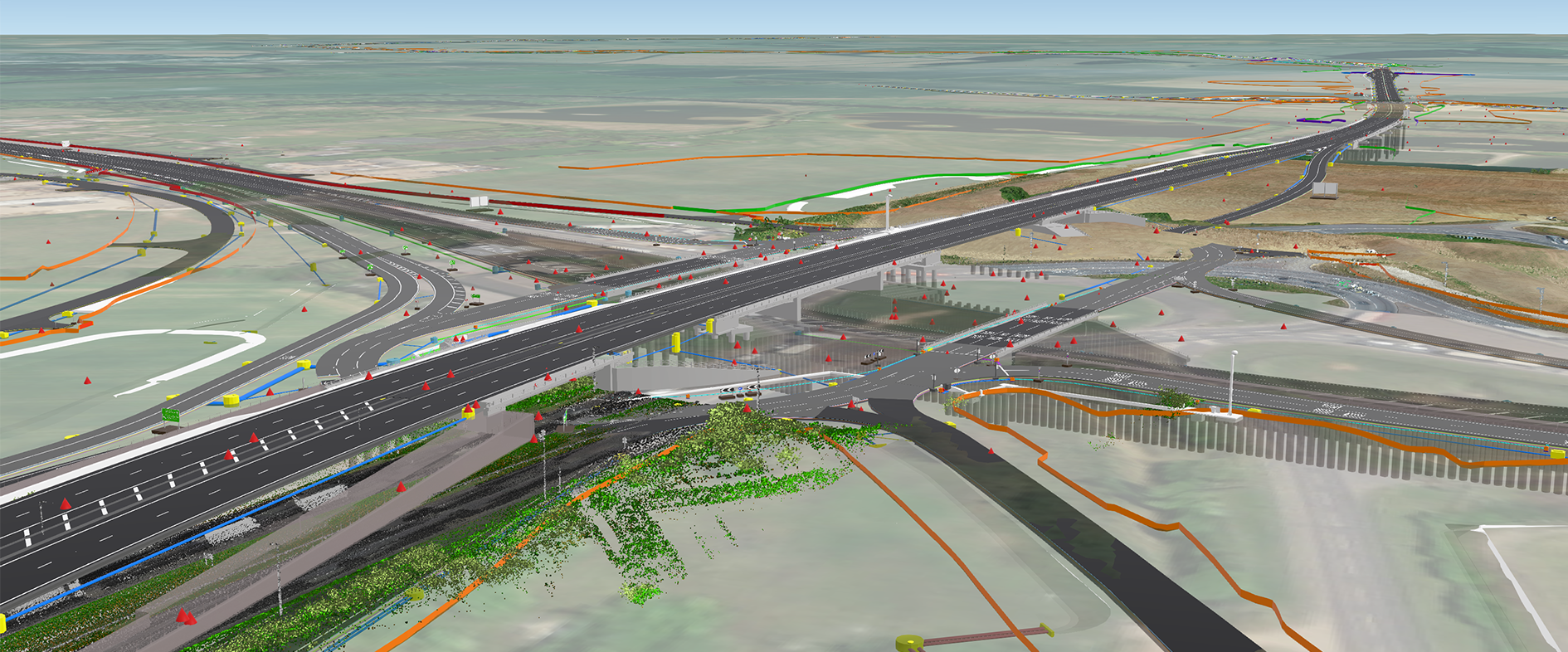
Skanska UK
By integrating GIS and BIM Skanska is transforming the delivery of construction projects delivering unprecedent value internally and externally, for partners, communities and society at large.
Skanska UK, one of the UK’s leading contractors, is driving digital transformation of the Construction sector by leveraging its construction expertise alongside advancements in digital technologies. Integrating the power of GIS (Geographic Information Systems) with key information management processes such as Building Information Modelling (BIM) and digital technology, Skanska UK is deploying Esri’s ArcGIS technology and BIM outputs to develop a smart, collaborative, agnostic, geospatial twin which, in return, is transforming project delivery and delivering economic, social and environmental value.
Up to 40% time savings across the project lifecycle
Vastly improved digital productivity and collaboration with stakeholders
Improved quality, health & safety during project delivery
The Challenge
Access to data of the right quality and at the right time, in a format that is trusted by all parties, is increasingly recognised as a critical enabler of digital transformation across the construction sector. How can we use data to break the silos, enhance cross-organisational collaboration and transform the customer experience, while playing a central role in the shift towards a low-carbon economy? All the while adhering to a high level of ethics and the most rigorous application of the best health and safety processes and procedures to ensure best quality during the construction and operation of built assets, from project delivery to beyond.
Skanska UK, one of the world’s largest construction companies, has always taken great pride in integrating construction intelligence with innovative technologies. A leader in the GIS space, Skanska believes that adoption of geospatial technologies is vital in accelerating decision-making, while underpinning collaboration and process improvements, even more notable in an industry often seen as resistant to change.
Integration with BIM aims to improve cross-disciplinary collaboration throughout the entire project cycle, from the tender stage and planning and design, pre-construction and construction, through to project handover and O&M. As each stage has its own challenges, Skanska UK is implementing a holistic digital strategy to improve decision making by providing accessible and trusted information to all project stakeholders through geospatial digital twins.
“Skanska’s leading, innovative and inclusive culture inspires innovation and utilisation of GIS as part of a lifecycle Digital Twin strategy, demonstrating our customer-centric focus and capability to lead the Digital Transformation of the construction industry”
Georgios Floros, Head of GIS, Skanska UK
The Solution
Skanska UK is integrating Esri GIS technology (ArcGIS Enterprise) and BIM outputs to develop a smart, agnostic, cloud-based, geospatial twin, by connecting multiple Common Data Environments (CDEs) and workflows. The entire ArcGIS Enterprise stack is used including dynamic apps which support the visualisation of geospatial Digital Twins, 3D virtual representations of built – and natural – environments.
By following a geospatial approach different types of data and systems are connected to create a single view that can be accessed throughout the entire project life cycle. Data capture and integration is enhanced, improving real-time visualisations providing advanced analysis and automation of future predictions. The system fully supports information and collaboration both internally and externally, across multiple organisations, breaking down barriers and empowering cross disciplinary collaboration and decision making.
George Floros, Head of GIS highlights: “Digital technologies are here to empower the construction teams. The adoption of GIS has been a team effort and result of a collaborative and inclusive approach between project delivery, technical and commercial teams.”
Integrating GIS and BIM is revolutionising the different stages of the project lifecycle. At the tender stage, for example, ArcGIS Enterprise is used to consume numerous data formats and make the information accessible across entire teams. ArcGIS Story Maps is used to communicate plans with local communities, inviting input through interactive engagement tools.
At the outset of any project, Construction Design Management (CDM) hazards are captured within ArcGIS Online enabling numerous stakeholders to collaborate over the identified hazards. The design team can raise a CDM hazard which is reviewed by the designer and contractor before being handed over to the construction and, eventually, Operations & Maintenance (O&M) teams. The construction team incorporates CDM hazards into site briefings and, at the project end, CDM hazards can be closed out before the final hand-over to O&M.
During construction, GIS is used to track and report construction progress, by integrating with BIM and quality information. This connected, geospatial ecosystem streamlines collaboration between operations, quality, planning and project management teams. Georeferenced field construction data and reality capture information such as point clouds and meshes, are automatically uploaded on dedicated project GIS web applications, boosting productivity, empowering engagement and accelerating decision-making.
“GIS has given us the capability to make information easily accessible to everyone working on a project, empowering our project delivery teams including our supply chain with an intuitive platform and enabling efficiency improvements in the delivery of complex infrastructure projects, contributing to our customers’ success.”
Susan Ryall, Technical Director
Benefits
Time Savings
Accessible, up-to-date information, automated digital workflows and the removal of silo working due to connected systems have led to times savings up to 40% during the project lifecycle. Working with virtual representations of multiple components supports proactive asset management, freeing up resources to work on other aspects of any given project.
Cost savings
Entire project lifecycles are enjoying improved digital productivity and saving millions through data and systems integration, as well as enabling a streamlined, more efficient, digital way of working. Time and money are saved from the team’s ability to iteratively model changes, test how components or systems function and troubleshoot malfunctions, inexpensively, in a virtual world.
Enhanced Health, Safety & Quality
Health and Safety hazards are captured within the 3D GIS-BIM portal, flagging up early hazard detection enabling a more collaborative, standardised approach among stakeholders. Multiple parties can focus on proactive rather than reactive construction hazard strategies. Learnings are consistently shared as identified hazards are handed over to the construction stage and then to the handover stage, creating additional efficiencies from collecting the information once and using it multiple times.
Accelerated Project Delivery Through Collaboration
Automated geocentric digital processes using GIS to connect data, disciplines and people are helping to release significant business benefits and expedite the construction process. Simon Lawn, Construction Manager explains: “Anyone who uses the platform will immediately understand the huge potential that is being unlocked. These are exciting times with the platform having the potential to bring together design, construction, temporary works, utilities, stakeholder, customer, commercial, planning and others into one arena.”
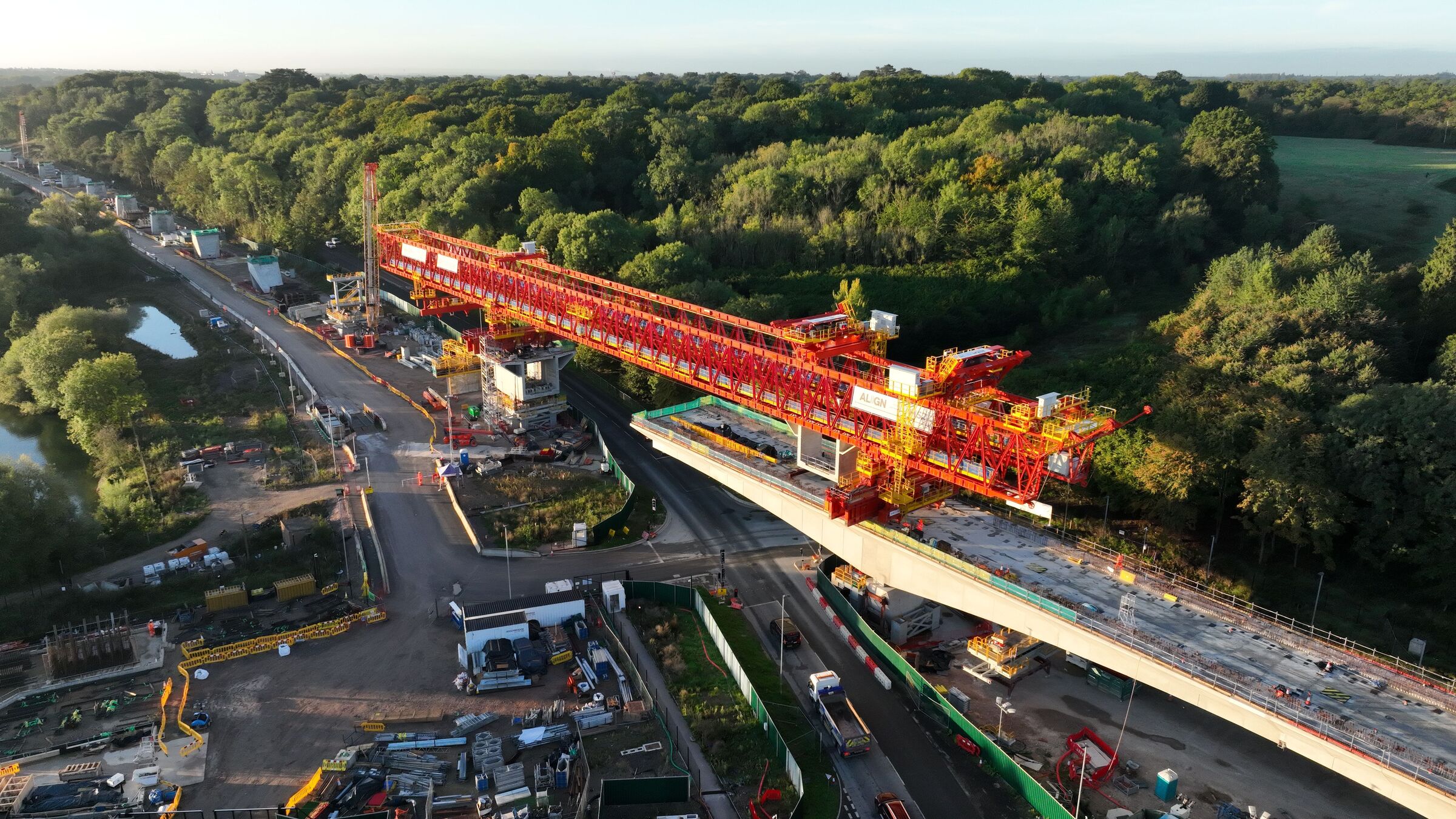
Align JV
Situational awareness is being delivered through GIS and BIM integration transforming project delivery
Align JV is a joint venture playing a key role in the construction of HS2 Phase One. It is using ArcGIS to deliver new, innovative, near real-time data visualisations of surface works, helping senior management and stakeholders across engaged organisations make vital decisions on a daily basis. As a result, management of planned works has been transformed helping deliver the programme ahead of schedule.
Situational awareness helps multiple teams act on information in real-time
More than ten dashboards support wider collaboration accelerating project delivery
Outmoded systems replaced by real-time digital asset tracking tools supporting real-time decision making
The Challenge
The geology and scale of works are among the enormous geotechnical and engineering challenges faced daily by construction partners working on the HS2 project. Align JV, a joint venture formed of Bouygues Travaux Publics, Sir Robert McAlpine and VolkerFitzpatrick, is charged with the delivery of the complex Central 1 section of HS2 Phase One, in a rural environment. This section includes the Colne Valley Viaduct at 3.37km long, what will become the longest railway bridge in the UK; a 16km twin-bored tunnel, the longest tunnel in HS2 Phase One sector and five vertical shafts to provide necessary ventilation and emergency access.
The viaduct alone requires 1,000 unique concrete segments, each up to 140 tonnes in weight, which will form the deck of the viaduct and over 100,000 precision-engineered 8.5 tonne concrete segments are required to build the concrete rings that line the tunnels. Managing the impact of this significant construction programme necessitates minimal disruption to residents and businesses, reducing the impact on the road and transport network, minimal impact on the environment while keeping communities informed at every stage.
To deliver on all this, while liaising with numerous other partners and the supply chain, it was vital for Align JV to have optimal situational awareness of the entire works. Being able to track the progress of multiple elements of the project at any one time would help not only to reassure local communities and ensure that the structures are being built and operated to the highest safety standards, but also adhere to the Government’s Code of Construction Practice and Considerate Constructors Scheme.
“Having real-time situational awareness of surface operations helps our senior team take faster, more informed decisions, supporting more efficient project delivery.”
Dani Jimenez, GIS Specialist, Align JV
The Solution
The AEC sector has, for many years, been using Esri GIS (Geographic Information System) solutions to improve workflows, bringing context to projects and enhance collaboration throughout project lifecycles. More recently construction companies have broken away from old-school engineering practices to find new, innovative ways of tracking progress and providing vital information to stakeholders.
Align JV’s GIS team had first-hand knowledge from working on previous projects as to how GIS and, specifically, integrating GIS with BIM data, could provide best in class situational awareness tools. Dashboards had not previously been used and were seen as vital to better understand the progress of surface works in this mammoth operation. Initially a number of mock dashboards were created using out-of-the-box apps (ArcGIS Web AppBuilder and ArcGIS Dashboards) in ArcGIS Enterprise, which were shared amongst technical and non-technical colleagues across the organisation. By integrating the ArcGIS stack using ETL tools, data is harvested from various systems and pushed into ArcGIS Enterprise in order to visualise it, helping personnel to understand events as they happen and make more informed decisions. Positive feedback enabled the GIS team to finalise the workflows required to set up a number of dashboards, tailored to different audiences.
Thirteen dashboards and two apps now give access to real-time project data, all in an easy-to-read format. The main boardroom conference screen features a dashboard presenting the data required for senior executives to track KPIs and make strategic decisions based on project goals. Examples of construction dashboards include viaduct pier and pile progress, jetty construction progress, segment and deck progress, tunnel cross passage progress, headwall installation and barrette installation progress.
This unprecedented situational awareness of the operational status of and construction components is not only helping with project efficiencies but driving a step-change in industry standards for health and safety performance.
“The implementation of these out-of-the-box tools has resulted in substantial qualitative gains at the highest levels of management and decision making. We have successfully replaced outmoded trackers with easy-to-understand, data driven GIS solutions.”
Derek Van Rensburg, Surface Works Construction Director, Align JV
Benefits
Data-driven Decision Making
Complete situational awareness and the status of different construction elements across the project enables both senior management and operational teams to make assessments on progress, and deviations from KPIs can be flagged immediately. This access to exponentially more information helps teams act on information in near real-time and supports increased accountability across project teams.
Enhanced Collaboration
13 dashboards (and applications) have been created helping Align JV quickly collaborate with numerous internal and external stakeholders. For example, working with the viaduct segment factory and girder launching teams, enabling teams to track the whole lifecycle of segments from the factory to the storing yard, and to the launching girder.
Effective GIS & BIM Integration
Bringing together the most up-to-date CAD design models alongside production and planning trackers into GIS datasets and into dashboards, allows a much wider audience near real-time access to information. A digital twin model of the development of the viaduct and tunnel construction assets is represented in near real-time is a game-changer and set to be vital tool for future joint ventures.
Management Time Savings
The implementation of dashboard tools has resulted in substantial gains at the highest levels of management and decision-making. Considerable time is being saved by management from the replacement of former industry-standard and cumbersome trackers, with easy-to-understand and data-driven GIS solutions to support near real-time decision-making. The new dashboards also negate the need for Align JV to invest in other costly, digital solutions.
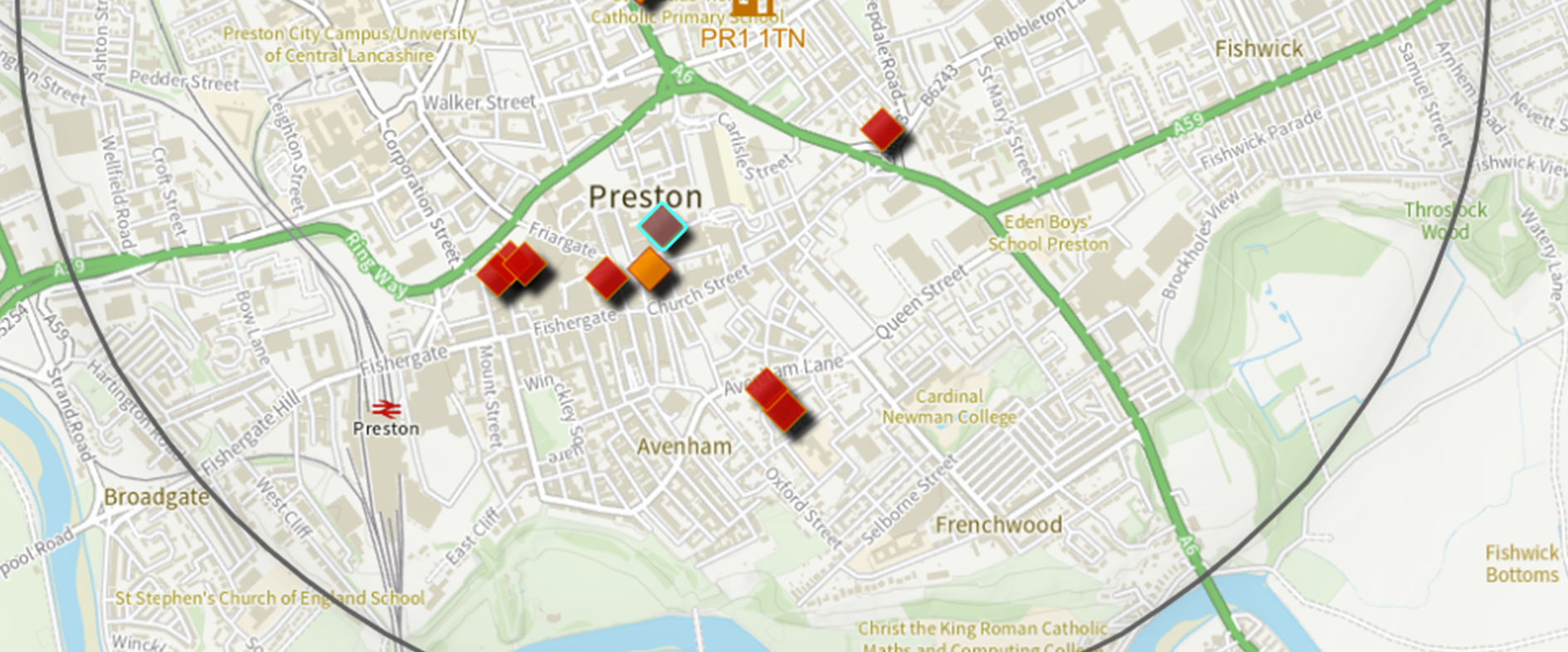
Lancashire County Council
Making the most of all the tools and capabilities of ArcGIS Online, we are delivering innovative digital solutions for Lancashire.
Lancashire County Council is putting Lancashire on the map in more ways than one. It is using ArcGIS Online to share information about the county on interactive web maps and, at the same time, showcasing best practice ways of using ArcGIS in local government as part of its Digital First Strategy.
Much-used Mario platform upgraded and enhanced with ArcGIS Online to deliver new features for users
New mapping apps and dashboards built with ArcGIS Online tools and arranged in themes to make data more accessible
Accelerated pace of innovation, with many council processes now being streamlined with ArcGIS apps
The Challenge
Maps have been front and centre at Lancashire County Council for more than twenty years, ever since the launch of Mario. When it was built in 2001 using Esri ArcGIS software, Mario (Maps and Related Information Online) was a ground-breaking geographic information system (GIS) portal enabling the council to share geospatial data on interactive maps. An instant success, Mario was visited in excess of five million times in the two decades that followed, delivering 800 million views of Lancashire maps.
A consultation conducted in 2021 revealed just how much Mario was much appreciated by the many public sector employees, volunteer organisations, small businesses and individuals who referred to it regularly. Users were, however, keen to have more features, including the ability to access Mario on smartphones, download data and view real-time information. In response, Lancashire County Council decided to harness the latest capabilities of ArcGIS Online to upgrade Mario, meet users’ expectations and help it become even more data driven, in line with its new Digital First Strategy.
“Using the whole ArcGIS Online toolset we have the ability to improve the accessibility of data, transform council services and ultimately better serve the people of Lancashire, which is what we are here to do.”
Maria Adamson, Senior ICT Engineer (GIS), Lancashire County Council
The Solution
Mario was redeveloped in-house by the council, using out-of-the-box ArcGIS solutions and templates to minimise bespoke development work and coding. Now, Mario users can view maps on their smartphones and tablets, access live information and stream accurate data directly from Mario into their own systems.
The next-generation Mario still has the same comprehensive online map viewer as before, but also presents the content in ‘themes’ for the first time, making it much easier for people to find the information they need. For example, there are specific maps for finding out when roadworks are scheduled, which is the nearest school and where the mobile library will stop. “We thought about which questions people might have, what data they might need to see to answer these questions and how we might best present it,” explains Maria Adamson, Senior ICT Engineer/Designer (GIS) at Lancashire County Council.
The council has taken full advantage of all the capabilities of ArcGIS Online to create new content for Mario in a variety of formats. Many of its new themed web apps were created with ArcGIS Experience Builder or Instant App templates, while others were built with ArcGIS Dashboards, including a new dashboard showing the number of collisions involving pedestrians or cyclists by year on a map, graph and pie chart. “The ArcGIS system gives us the capability to build much of what we need in one space, thus enabling us to respond more rapidly to the needs of our customers,” Adamson says.
Increasingly, Lancashire County Council is now also using the full suite of ArcGIS solutions to help it build end-to-end processes. For instance, it used ArcGIS Survey123 to capture information from the public during a walking and cycling consultation and presented the results in an interactive mapping app, created with ArcGIS Web AppBuilder and shared via Mario. The development of innovative new solutions like this earned the GIS team the well-deserved accolade of ‘Lancashire County Council Team of the Year 2022’.
“Mario is a great example of how the council is continually striving to offer ‘digital first’ solutions, putting citizens and staff at the heart of innovation and ensuring sustainable digital services fit for the future.”
Sharon De Vall, Digital Strategy Manager, Lancashire County Council
Benefits
Easier access to local information
The redevelopment of Mario has undoubtedly made it easier for members of the public and businesses to find and use local information. In addition, as Mario can now be accessed on smart phones and tablets, it is easier for council employees and public officials to find the information they need and respond to enquiries from their constituents confidently, straight away.
Rapid delivery of new public services
Using the latest capabilities of ArcGIS Online, Lancashire County Council has the capability to respond to crises and deliver new public services exceptionally quickly. For instance, it took only one week to build an ArcGIS-based workflow to process applications from organisations able to provide warm spaces for vulnerable people. Over 60 organisations successfully used an ArcGIS Survey123 app to register, and urgently-needed, up-to-date information about warm spaces was made accessible on the council website within just a few weeks.
More efficient, streamlined council processes
Through the process of enhancing Mario, the ICT has successfully raised awareness of GIS and stimulated demand for more GIS services to help streamline council processes. As a result, a range of new ArcGIS-based solutions are currently in development including a highways maintenance dashboard. “The use of GIS is growing exponentially now,” Adamson says. “Using the whole ArcGIS Online toolset we have the ability to improve the accessibility of data, transform council services and ultimately better serve the people of Lancashire, which is what we are here to do.”
Strong endorsement of Digital First Strategy
The success of Mario is a strong endorsement for the council’s Digital First Strategy, which aims to make the council more data driven and drive the use of innovative technologies to benefit Lancashire. According to Sharon De Vall, Digital Strategy Manager at Lancashire County Council, “Mario is a great example of how the council is continually striving to offer ‘digital first’ solutions, putting citizens and staff at the heart of innovation and ensuring sustainable digital services fit for the future.”
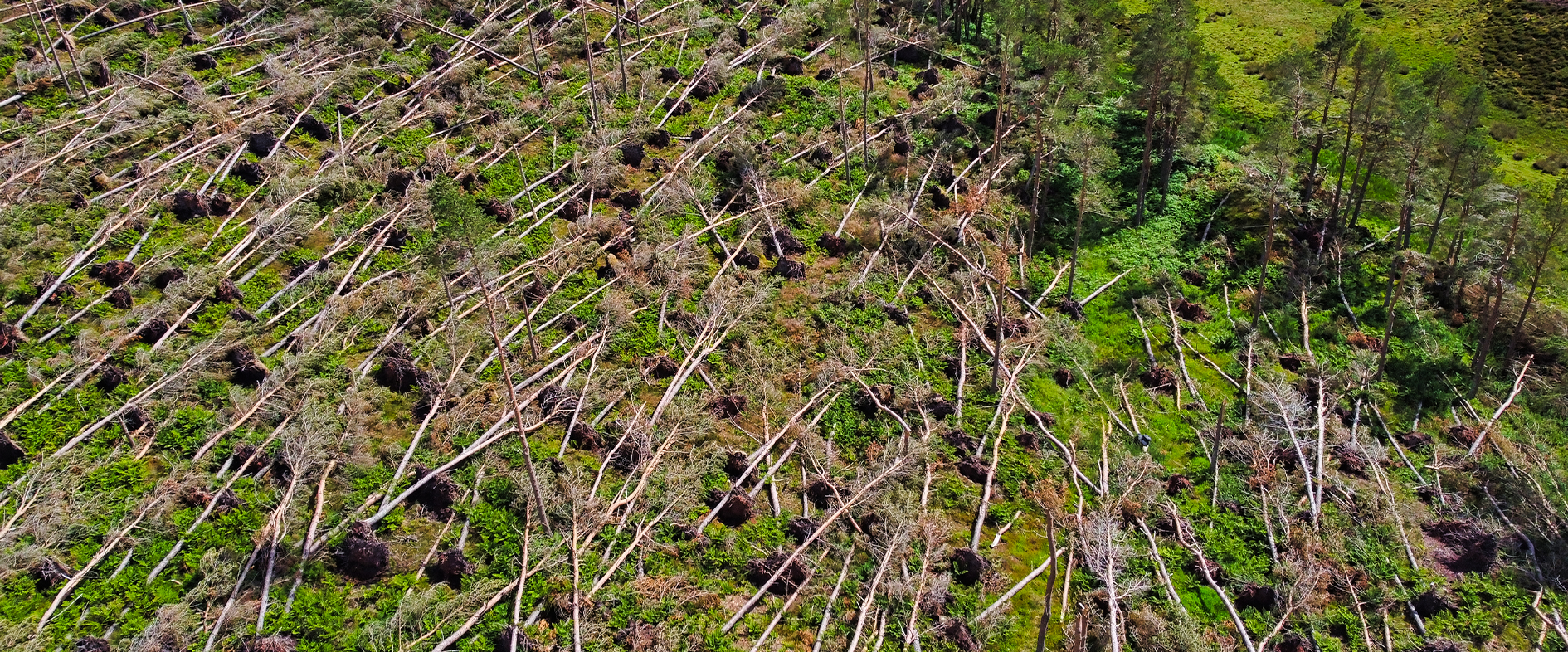
Forest Research
In the aftermath of Storm Arwen, ArcGIS enabled us to engage the help of citizen scientists and accurately assess the devastating impact of this natural disaster on the UK’s forests and woodlands.
In the aftermath of Storm Arwen, Forest Research used ArcGIS to enable people to check, edit and capture data in the field about the locations of 22 million fallen trees. This citizen-science app allowed the organisation to verify data generated via machine learning technology and build up a more accurate and comprehensive picture of the full scale of the natural disaster.
Forest Research created its citizen-science platform using ArcGIS Hub Premium within just one day
Citizen scientists could verify and edit data in the field with an easy-to-use ArcGIS app on their smartphones
The estimated number of felled trees increased by over 250% with citizen involvement
The Challenge
In November 2021, Storm Arwen swept across Scotland and Northern England causing catastrophic damage to woodlands and forests. Stunned by the scale of the destruction, foresters and land owners needed to know how many trees had fallen and exactly where, to help them recover wood safely that could be used for timber production. Fallen trees that are not harvested quickly will soon become unviable, leading to the waste of a valuable resource, increasing the release of carbon, creating a breeding ground for pests and diseases and augmenting the risks of wildfires.
“We were able to spin up a citizen-science portal using ArcGIS Hub Premium in less than a day.”
Tony Farndon, GIS Specialist and Development Manager, Forest Research
The Solution
In the first instance, data engineers and data scientists at Forest Research used Sentinel Synthetic Aperture Radar (SAR), a technology that detects changes in the forest canopy cover by measuring radio waves between satellites and the ground. The organisation compared SAR readings from before and after Storm Arwen and created a model using machine learning techniques to identify areas where there had been a notable disturbance in canopy cover.
This initial dataset estimated the loss of around 8 million trees, providing the first indication of just how much devastation the storm had caused. When Forest Research published its data, however, it began to receive reports from local authorities, utilities and the general public about additional areas of tree loss. It conducted site visits to forest areas near its office in Edinburgh to see the situation on the ground, but simply didn’t have the staff required to validate its tree-loss data across all of the affected areas of Scotland and Northern England. That’s when citizen-science was raised as a possible solution.
Forest Research had been using solutions from Esri’s ArcGIS suite for many years and was familiar with ArcGIS Hub Premium, an online data sharing platform that allows thousands of people to submit and edit data via the web or mobile apps. It realised that it could use ArcGIS Hub Premium to engage the help of people across the industry and the general public as citizen scientists to validate its tree-loss data.
Working exceptionally quickly, Forest Research set up a dedicated landing page for the initiative on ArcGIS Hub Premium and built a mobile app using ArcGIS Survey123 to enable people to view, edit and validate data using their smartphones. “We were able to spin up a citizen-science portal using ArcGIS Hub Premium in less than a day,” says Tony Farndon, GIS Specialist and Development Manager at Forest Research.
Forest Research shared the app with the forest industry, local councils, utilities, road departments and the general public, encouraging everyone to help validate the SAR-generated data so that it could refine its model, improve its machine learning and reach a more accurate estimate for the actual number of trees felled by the storm. Although the organisation initially had some concerns about how easy it would be for non-GIS experts to edit data in the field, the Survey123 app was widely used and delivered a large volume of quality data.
“As a result of the citizen-science validation, we can now confidently estimate that 22 million trees came down in the UK on one night during Storm Arwen.”
Tony Farndon, GIS Specialist and Development Manager, Forest Research
Benefits
Improved confidence in the accuracy of tree-loss data
The citizen-science approach that Forest Research implemented using ArcGIS Hub Premium enabled it to quickly validate data across thousands of square miles of land throughout Scotland and Northern England and gauge the impact of Storm Arwen with far greater accuracy and confidence. It discovered that more than two and half times more trees had been damaged than initially estimated. “As a result of the citizen-science validation, we can now confidently estimate that 22 million trees came down in the UK on one night during Storm Arwen,” Farndon says.
Better planning for commercial timber production
Forest Research was able to share accurate information about the locations of fallen trees with organisations throughout the forestry industry. Consequently, forestry and commercial logging companies could make faster, better decisions about where to focus their resources to harvest fallen trees before they began to degrade. Similarly, sawmills were able to use the data to better plan how to manage the sudden surge in demand and store the additional volume of wood that would be coming to them.
More information to support sustainable forest management
Forest Research’s data is now being used to help foresters and landowners plan their ongoing clean-up activities and identify areas where action may be needed to mitigate the risks of disease and pests. The data is also being used by tree nurseries to help them understand the volume of seeds and young trees that will be needed to replant areas devastated by the storm and ensure the sustainable management of forests and woodlands.
A proven approach for future storms
The citizen-science-led initiative that Forest Research developed in the aftermath of Storm Arwen, using ArcGIS Hub Premium and ArcGIS Survey123, has given the organisation a proven approach that it can reapply in future storm events. “With climate change, events like Storm Arwen are estimated to happen more often,” Farndon says. “We now have a hub, a model, a mobile data capture solution and a proven citizen-science approach that we can use to respond quickly following severe storms and gather the accurate information the forestry industry needs.”

Thirteen Group
Thirteen Group’s Community Resilience strategy works to understand local communities better, inform decisions and signpost customers to the services available.
Thirteen Group manages and owns more than 35,000 homes across the North East, North Yorkshire and the Humber. Their community resilience strategy uses ArcGIS to map communities with external location-based data at a local level. They use this to target resources in neighbourhoods, to improve customers’ lives and make their communities safer, healthier and more sustainable.
ArcGIS maps internal and external data to localities for the community team to use in planning and decision making.
ArcGIS reveals the different needs of each local community and displays the amenities and support that exist in the location.
Thirteen Group uses ArcGIS to track the impact of capital investments. It also provides solid data to support applications for funding.
The Challenge
Thirteen Group’s community resilience strategy is helping communities to become resilient and become sustainable in the long term. It focuses on understanding customers’ needs better, making the best possible use of assets and understanding how they can engage with its customers and collaborators to make a difference in a community.
Covid presented challenges, and the future can seem uncertain with rising prices, job insecurity and the threat of climate change. Thirteen Group is responding by mapping its communities and assets at local levels to offer targeted support and enable communities to thrive and become more resilient.
“We are passionate about using GIS to understand our communities. We are on a journey and there will be much more we can do with our data".
Rebecca Dick, GIS Lead, Thirteen Group
The Solution
Thirteen Group has been using Esri’s ArcGIS solutions since 2010. Initially they used ArcGIS to plan maintenance of their properties and grounds. Now more departments use ArcGIS and they have added ArcGIS Online and Esri’s Living Atlas to learn more about their communities.
In housing, mapping communities is key. It relates homes to external data such as the managing authority, LSOA, ward and the built environment. It also shows the proximity to towns and transport. Thirteen Group maps all of this data and then uses the multi-criteria analysis and widgets in ArcGIS to manipulate the data and present it in the required way.
ArcGIS Online allows them to share the data with selected colleagues. Colleagues can then click on a location and drill down to interrogate the information.
Rebecca Dick, GIS Lead, Thirteen Group, says: “A data table of addresses will not show you that one street backs onto another. We use ArcGIS to map and see the entire picture of the housing services we manage, in the context of the local communities”.
By using the system, they have been able to:
Map their housing datasets in ArcGIS to reveal the hotspots for housing demand and identify areas with many empty homes.
Overlay their data with data from partners, such as the local authorities, schools, charities and universities. They add data from Esri’s Living Atlas, the foremost repository of geospatial data in the world. Combining data reveals how communities differ and shows where they should target resources. The datasets from ArcGIS form the basis for collaboration and customer consultations and enable targeted interventions in communities.
Create a ranking system in ArcGIS that shows where to focus new services and who would benefit from them.
Study the impact of recent capital investments and measure how projects have impacted our communities.
“GIS data is very ‘interpretable’. We can view a wealth of data together which is extremely useful for decision-making.”
Rebecca Dick, GIS Lead, Thirteen Group
Benefits
Highlighting local issues helps operations
ArcGIS presents a clear view of the factors affecting communities and the hotspots for frontline services. It helps to manage factors such as the turnover of tenants and debt that increase costs, and target resources to improve customer satisfaction. It is very easy to understand the maps because they are visual. The team particularly like the interactive maps and heat spots because they are so intuitive and easy to understand.
A better understanding of how to support communities
Thirteen Group is using ArcGIS to map the social and environmental factors affecting their communities and understand their needs at a grassroot level. The information is then used to tailor initiatives to individual areas. For example, they have mapped areas of high crime and overlaid the data with neighbourhood watch areas. Their teams then worked with the community to help establish new Neighbourhood Watch groups. They have also mapped areas with unemployment and high arrears and overlaid the data with local support services to identify any gaps. The information has then been used to develop interventions within the community, such as eco shops, employment and skills academies, as well as benefit campaigns.
ArcGIS helps with planning and grant applications
ArcGIS shows where demand for homes is greatest and where it could become even higher. It helps target areas of focus and look for development opportunities. The data supports their applications for grants and community renewal funds. It is important that they can make evidence-based decisions, supported by data from ArcGIS.
ArcGIS can also show why certain areas are given priority for resources. Thirteen Group can track the impact of interventions over time to understand how they are helping customers, and if there should be requests from the community, the GIS data allows them to respond in an informed way.
Partnerships are more effective with ArcGIS
Housing associations need to collaborate with partners. ArcGIS enables Thirteen Group to map their partners’ amenities in relation to their own communities and work more effectively with the partners without silos or duplication of services. Where there is a particular community need, they can signpost customers to the right partner. Where a service works well in one community, they might repeat it in another area with a similar situation and profile.

Jacobs
We are helping to shape public transport in Scotland for the next 20 years, by using ArcGIS to analyse, visualise and share data about the accessibility of current and proposed transport networks.
The technical consulting firm Jacobs has built a tool using ArcGIS that analyses the accessibility of public transport in Scotland and displays data in highly visual and interactive web maps and dashboards. Delivering enlightening evidence about public transport needs, the tool is now being used to help Transport Scotland make crucial investment decisions for the future.
Analysis of 2 million locations, 53,000 transport stops and 7,000 key destinations is conducted with ArcGIS Pro
Accurate, nationwide data is displayed visually in interactive, easy-to-use web maps, created with ArcGIS Online
Users can easily view and query data on actual and proposed transportation systems using ArcGIS Dashboards
The Challenge
Transport Scotland had an important, yet complex, question to answer. How should the public transport network in Scotland be developed over the next twenty years to make it accessible to more people, encourage more sustainable travel choices and support the Scottish economy? It launched a Strategic Transport Project Review and appointed Jacobs to help it gather the data and insight it needed to enable ministers to make evidence-based decisions about future investments in public transport services.
The challenge for Jacobs was enormous. Existing public transportation modelling tools had considerable limitations, and public transport behaviour could not be reported or analysed at national, regional and local levels. Jacobs therefore set out to create a new tool for analysing, modelling and displaying transportation data that could be used easily by many teams for different purposes during the Strategic Transport Project Review and other projects in the future.
“The spatial components of the tool were imperative to assist in analysing the public transport accessibility across Scotland.”
Kyle Chesney, Principal Transport Planner, Jacobs
The Solution
A specialist geographic information system (GIS) team at Jacobs built the new solution using Esri’s ArcGIS software and ArcGIS web apps in combination with other technologies. Called the National Public Transport Accessibility Tool (NaPTAT), it considers over 2 million potential journey origin points (from a 200m x 200m grid), takes into account the frequency of public transport services from over 53,000 public transport stops and calculates journey times to over 7,000 key destinations relating to employment, education, healthcare, retail and food stores.
Jacobs used the Network Analyst capabilities of ArcGIS Pro to calculate the distance and walking or cycling time between each point of journey origin and the nearest public transport stops, within a threshold distance. It then used the Network Analyst outputs and Python scripting to calculate specific accessibility scores based on the number of public transport stops nearby, the distance away and the frequency of services at these locations. “ArcGIS Pro was one of the most important solutions we used, as it helped identify public transport in the vicinity of each point of origin, as well as the destinations that can be directly accessed by walking or cycling from any of the origin points,” explains Jaime Rodriguez Gozalo, Principal GIS Consultant at Jacobs.
Next, Jacobs used ArcGIS Online to build a web app that enables people to visualise the transportation data on an interactive map of Scotland alongside relevant third party data, such as the Scottish Index of Multiple Deprivation. Users can zoom into the map, turn different layers of data on and off and interrogate the data to gain insight.
As a further extension to NaPTAT, Jacobs also created a series of interactive ArcGIS Dashboards, enabling users to not only view the data but also customise it for their own study. One dashboard displays the current performance of public transport in Scotland, while another shows comparisons between the current status (baseline results) and modelled improvement scenarios.
“We were not only able to create one single, detailed database of results, but we were able to really go to town using Esri’s online suite of applications to display this in the best way possible for all the teams involved in the project.”
Leigh Wilson, GIS Analyst, Jacobs
Benefits
Improved understanding of public transport accessibility
ArcGIS Pro and Network Analyst provide the core analysis capabilities of the NaPTAT solution, revealing just how accessible public transport services are, at each location and for discrete groups, such as people travelling to employment in urban areas, as compared to rural jobs. Recognising the key role played by ArcGIS in NaPTAT, Kyle Chesney, Principal Transport Planner at Jacobs, says, “The spatial components of the tool were imperative to assist in analysing the public transport accessibility across Scotland.”
Clear visualisations of complex, nationwide data
ArcGIS Online is another core component of the NaPTAT solution, as it has enabled Jacobs to display the results of its nationwide transportation analysis in a highly visual way, on interactive maps and dashboards. Consequently, it is much easier for users to identify previously hidden patterns and accessibility issues. “We were not only able to create one single, detailed database of results, but we were able to really go to town using Esri’s online suite of applications to display this in the best way possible for all the teams involved in the project,” says Leigh Wilson, GIS Analyst, Jacobs.
A flexible, easy-to-use analysis tool
Using ArcGIS Online, Jacobs has been able to build a tool that is incredibly easy for people from a wide variety of teams to use, without having to reach out to the GIS team for support. The ArcGIS Dashboards for example, give users just the information they need, in a format that they can easily interact with to find the answers to their questions. “The data, information and conclusions can all be interrogated, filtered and used by anyone,” Wilson says. “You really don’t need to know how to use GIS to analyse these results or make any sort of calculations.”
Tangible evidence to inform future transport investments
Most importantly, the NaPTAT solution has met the needs of Transport Scotland and is now being used to gather evidence to inform new public investments. For example, users can clearly see on the ArcGIS Dashboard that proposed changes to the transportation network in the Edinburgh and South East region will enable over 25,000 more people to access a hospital in under 30 minutes, in what will be a major improvement to the public transport network.

Vodafone
We have created a digital twin using ArcGIS that is helping us to maintain a high quality of service for customers, reduce carbon emissions and operate more efficiently.
The leading communications company Vodafone is taking steps to maintain mobile signal strength across the UK, using a digital twin built on ArcGIS Enterprise. With a 3D model of its network, assets and the environment, the company can keep society connected, while operating more efficiently and reducing carbon emissions.
Digital twin provides a first-ever 360 degree view of Vodafone’s communications network and how it operates
Over 40 million environmental features and nearly 500,000 network features are mapped in 3D using ArcGIS Enterprise
Engineers can assess the impacts of tree growth or new buildings on signal strength and network performance, from their desktops
The Challenge
With 300 million mobile customers worldwide, Vodafone’s aims are to keep people, businesses and communities connected and help build a digital future for everyone. The company is at the forefront of the 5G revolution in the UK, but high frequency mobile services like 5G require a clear line of sight to operate effectively. If a new building is constructed, an existing building is extended or tree growth occurs, this line of sight can be obstructed, resulting in a degradation in mobile signal strength. Consequently, Vodafone needs to proactively monitor new buildings and tree sizes and plan proactive network enhancements to mitigate the impacts of this ‘clutter’ and maintain a high quality of service for customers.
“Our customers are really important to us here at Vodafone and we believe, with the help of this new digital twin, we can continue to deliver fantastic service to our millions of customers.”
Boris Pitchforth, Lead Architect, Vodafone
The Solution
Vodafone had begun to invest in 3D modelling and explore potential uses for a digital twin – a virtual, 3D representation of the mobile network and the surrounding environment. Rebecca King, former Geographic Information System (GIS) Lead at Vodafone says, “When I first started doing GIS, digital twin was not a possibility, but the technologies have developed so much that we can make digital twin a reality now.”
Soon, the organisation realised that a digital twin could prove invaluable in helping it to identify clutter. “It occurred to our team, what if we could create a digital twin for connectivity across the UK,” explains Boris Pitchforth, Lead Architect at Vodafone. “It would surely make our system more robust if we could scrutinise the topography of the environment and assess the impacts of tree growth or new construction developments on signal strength and network performance.”
Energised by this vision, Vodafone used ArcGIS Enterprise to model its UK assets and the wider environment in 3D and added relevant data sets to create and enrich a digital twin. Described by Boris Pitchforth as a “really immersive experience,” the project enabled Vodafone to gain a 360 degree view of its communications network in the UK and how it operates. “Using ArcGIS Enterprise and cloud infrastructure capabilities, we have been able to create something special,” he says.
“When I first started doing GIS, digital twin was not a possibility, but the technologies have developed so much that we can make digital twin a reality now.”
Rebecca King, former GIS Lead, Vodafone
Benefits
Unprecedented understanding of mobile network
The digital twin created with ArcGIS Enterprise gives Vodafone a detailed view of its UK mobile network and the wider environment for the first time. Employees can see, in one place, on a single map, over 40 million environmental features, such as trees, hills and buildings, and nearly 500,000 network features like mobile phone masts. “Our ArcGIS digital twin is giving us an unprecedented understanding of our entire UK network,” says Johenny King Puente, Network Specialist at Vodafone. “With this level of detail we can make decisions faster and with more accuracy.”
Fantastic service for millions of customers
Most significantly, the digital twin makes it easier for Vodafone to identify changes in the environment and identify clutter that might be causing a degradation in service. As a result, the company’s engineers can implement mitigations more quickly to deliver a more consistent service to customers. “Our customers are really important to us here at Vodafone and we believe, with the help of this new digital twin, we can continue to deliver fantastic service to our millions of customers,” Boris Pitchforth says.
Improved operational efficiency
Through the ongoing use of the digital twin, Vodafone expects to be able to make significant and sustained operational efficiencies. For example, engineers now have detailed information available at their fingertips, all in one place, and spend less time looking for the data they need. The 3D models also give engineers a good understanding of the wider environment and locations of clutter, from their desks or using mobile devices, enabling them to make well-informed decisions more quickly and accelerate business processes.
Lower carbon emissions
Like most organisations, Vodafone is working hard to reduce the environmental impacts of its operations and it believes that its digital twin will help it achieve its ambitious target for carbon emissions. Already the digital twin is helping by reducing the number of field trips and site visits that engineers need to make. “We have pledged to eliminate carbon emissions from our operations by 2027,” Boris Pitchforth says. “With operational developments and innovations like digital twins, we can achieve this.”
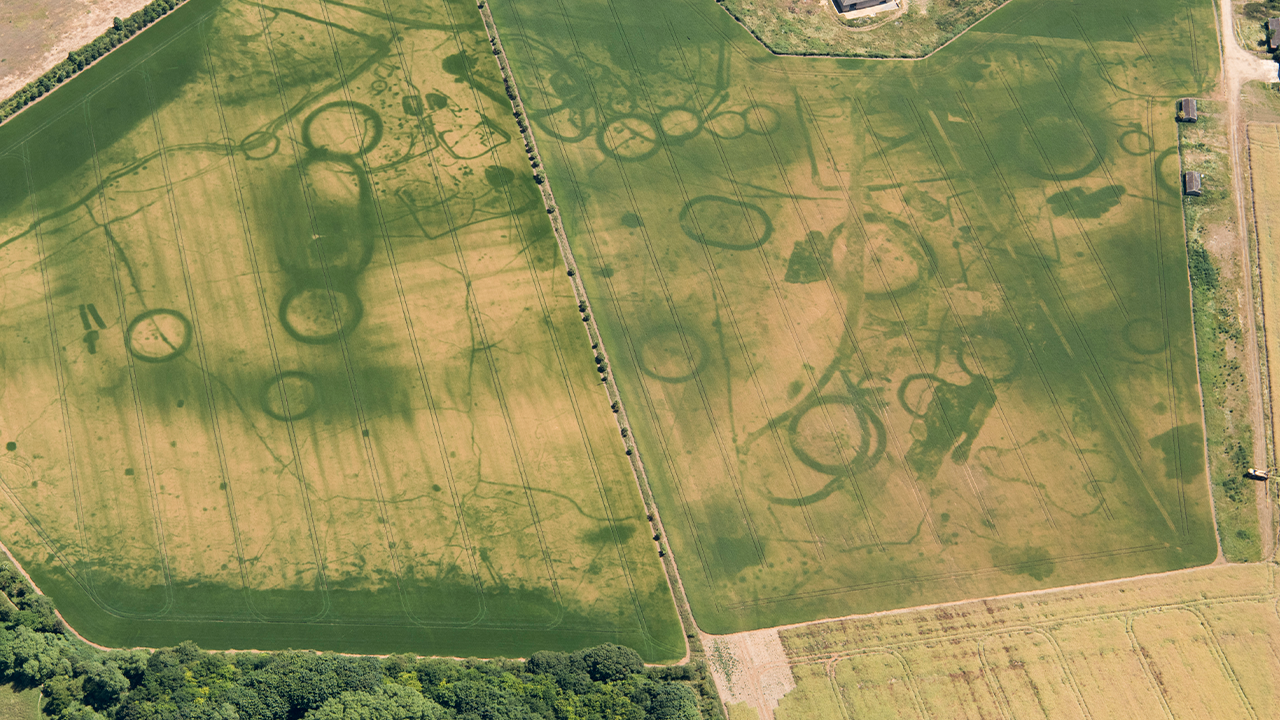
Historic England
We are helping people to discover and explore the rich archaeology of England by making our images and the mapping derived from them, accessible via ArcGIS
Historic England is the custodian of millions of precious archive resources ranging from the very first balloon flights to the latest photography of England’s highstreets and every photographic image, map and illustration you can imagine. The organisation has now embarked on a journey to digitise, standardise and share its archaeological data and images using ArcGIS, to help more people discover and explore England’s rich archaeology.
Data from tens of thousands of historic images have been digitised, analysed, cleaned and standardised using ArcGIS Pro
Over 30 years’ of aerial mapping and interpretation and more than 450,000 specialist photographs can be accessed via apps created with ArcGIS Web AppBuilder
New apps can be built quickly to support specific projects, making archaeological imagery, maps and data easy to find and understand
The Challenge
For over thirty years, Historic England, its predecessor organisations and other heritage bodies funded by it have been identifying, mapping and recording England’s archaeological sites using aerial photographs and, more recently, airborne laser scanning (lidar). In addition, Historic England has amassed over 6 million oblique and vertical photographs recording England’s changing landscape over the past century.
Recognising the huge value of these resources, Historic England wanted to find a way to share its vast archive of archaeological mapping data and images in a way that would be accessible to everyone. First, however, it had to overcome the formidable challenges posed by digitising, standardising and consolidating resources that were in a myriad of different digital and paper-based formats.
“The combination of the desktop and web-based ArcGIS software made a real difference; we could not have got to where we are without using them.”
Simon Crutchley, Remote Sensing Development Manager, Archaeological Investigation, Historic England
The Solution
A long-time user of products from Esri’s ArcGIS suite of geographic information system (GIS) solutions, Historic England began by using ArcGIS Pro on the desktop to clean up its historic data. ArcGIS Pro was particularly effective at processing old computer-aided design (CAD) files, eliminating errors and inconsistencies to create a standardised output. “Using desktop GIS software gave us a way of quality controlling our data in a way that was impossible in a CAD environment,” says Simon Crutchley, Remote Sensing Development Manager at Historic England.
Next, the organisation explored ways to visualise and share its data and maps. It began by creating an ArcGIS StoryMap with ArcGIS Online to enable people to explore Historic England’s aerial imagery of Capability Brown gardens. The StoryMap highlighted all sites associated with the renowned landscape designer across England and allowed people to click on individual locations to access more information. “The Capability Brown StoryMap became a proof-of-concept for how we might use ArcGIS to provide all our digital maps and imagery to a wider public,” Crutchley says.
The organisation went on to create the ground-breaking Aerial Archaeology Mapping Explorer app (AAME). Built using ArcGIS Web AppBuilder, this solution provides easy access to all the mapping and interpretation work carried out by Historic England’s Aerial Survey team, in one place, to a standardised level, for the first time. It includes a query tool and allows users to zoom into specific archaeological features, such as camps along Hadrian’s wall. Clicking on these features brings up details about the type of camp, its age and how it appears today with hyperlinks to more historical information.
To complement AAME, Historic England subsequently created another app with ArcGIS Web AppBuilder, called the Aerial Photo Explorer app (APEX), for sharing original photographs. Currently, around 400,000 specialist oblique photographs and 50,000 vertical photographs of archaeological sites are available via APEX, in full resolution. The organisation aims to steadily share more of it 6 million images using APEX and future solutions built with ArcGIS Experience Builder.
“People are interested in England’s historic places if they can find information easily in an accessible form, and that’s what we’ve been able to deliver in the Archaeological Mapping Explorer.”
Simon Crutchley, Remote Sensing Development Manager, Archaeological Investigation, Historic England
Benefits
Improved public access to specialist resources
Anyone interested in local history can now use AAME to gain easy access to over thirty years of mapping and interpretation carried out by Historic England and other organisations grant-aided by it. People can also explore over 450,000 images using APEX to find out more about historic sites. “The combination of the desktop and web-based ArcGIS software made a real difference; we could not have got to where we are without using them,” Crutchley says.
Tailored apps for specific projects
Using ArcGIS, Historic England can quickly build tailored apps that make data and imagery relating to specific projects available in an accessible and meaningful format. For example, Historic England used ArcGIS Web AppBuilder to create a dedicated interactive map of Cannock Chase in Staffordshire, one of the best-preserved First World War sites in England. The map enabled Historic England to share lidar imagery and other data with a large number of local volunteers who were involved in a project to assess the remains of camps where 500,000 men trained before heading to the front line.
Deeper understanding of archaeological sites
Together, AAME, APEX and Historic England’s project-specific mapping apps are helping people to better understand archaeological sites, by making a wide range of resources more accessible to more people than ever before. “A collection of photographs on its own doesn’t constitute knowledge,” Crutchley explains. “It is only by bringing together imagery, mapping and reports and presenting it all geospatially on an interactive digital map, that we can help people gain a deeper understanding of the archaeology of England.”
A positive response from the public
The public response to Historic England’s ArcGIS apps has been incredibly positive. When, for example, AAME was launched, the story received 33,560 news page views and generated 37 pieces of media, making it Historic England’s best ever website news story to date. Then, in the first three months alone, it received over 137,000 views. “The success of the launch showed us that people were interested – not just in the historic environment, but in maps specifically,” Crutchley says. “People are interested in England’s historic places if they can find information easily in an accessible form, and that’s what we’ve been able to deliver in the Archaeological Mapping Explorer.”


